A Rising Trend: Coil Shocks
Although air-sprung shocks have long dominated the realm of standard trail and enduro bikes, there has been a notable shift towards coil shocks, particularly among professional enduro riders. This growing preference is now making its mark on the broader market as well.
One of the trailblazers in this movement was Richie Rude, who made the switch from air-sprung shocks to coil. With the introduction of lock-out levers, coil-sprung shocks now offer an even wider range of applications than ever before.
That being said, let’s delve into the advantages and disadvantages of utilizing a coil-sprung rear shock on enduro bikes or even trail bikes. Is it worth considering an upgrade?
Exploring the Similarities and Differences
In order to determine which shock type is best suited to your needs, let’s examine the similarities and differences between air and coil rear shocks. To gain further insights, we had the opportunity to speak with Chris Mandell, the RockShox rear shock product manager, and hear the brand’s perspective on both spring types.
What Defines a Coil Shock?
Coil shocks are gaining traction among enduro and trail bikes, and it’s crucial to understand what sets them apart. These shocks feature a steel or titanium spring that wraps around the shock body. Unlike air-sprung shocks, coil-sprung shocks generally possess a linear spring rate. This means that the force required to compress the spring increases consistently in proportion to its compression.
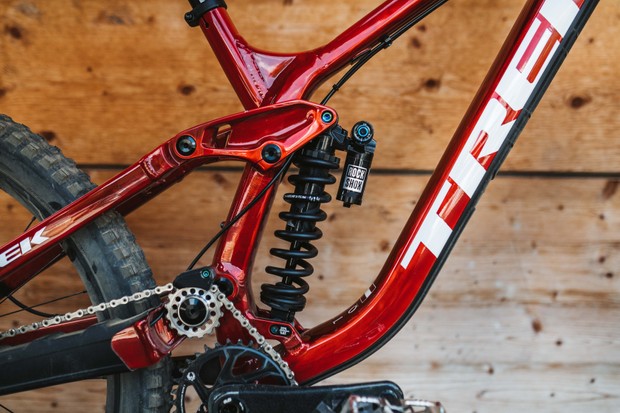
For instance, let’s say we have a 500lb/in spring that is 10 inches long. To compress it by one inch, we would need a load of 500lb. With each additional inch of compression, an extra 500lb of load would be necessary. To bring the spring to 5 inches of compression, a staggering 2,500lb of load would be required. This linear rate is what characterizes these springs.
Once Exclusive to Downhill Bikes…
In the past, coil shocks were primarily found on downhill bikes. The longer race runs in this discipline demanded damper consistency and resistance to heat build-up, while weight was a secondary concern.

Dampers in air shocks have the potential to become heated during extended rides, resulting in a decrease in the viscosity of the oil and compromising the shock’s consistency.
However, it is worth noting that air shocks are frequently used on DH rigs due to their high level of tunability. The longer stroke and eye-to-eye shock lengths contribute to a reduction in heat build-up, as the leverage rates are lower, meaning the shock does not have to exert as much effort compared to a bike equipped with a shorter-stroke shock.
Air shock designers have made significant improvements in recent times to enhance heat dissipation capabilities in their shocks.
The Definition of an Air Shock
Air shocks are widely utilized by trail and enduro riders. Steve Behr / Our MediaAir-sprung shocks are nearly ubiquitous in the world of trail and enduro rigs, utilizing pressurized chambers.
Most shocks feature two chambers – a positive spring chamber that supports the rider’s weight and a negative spring chamber that counteracts this force, enhancing sensitivity by drawing the shock’s shaft into its travel. Rubber seals are employed to prevent pressurized air from escaping.
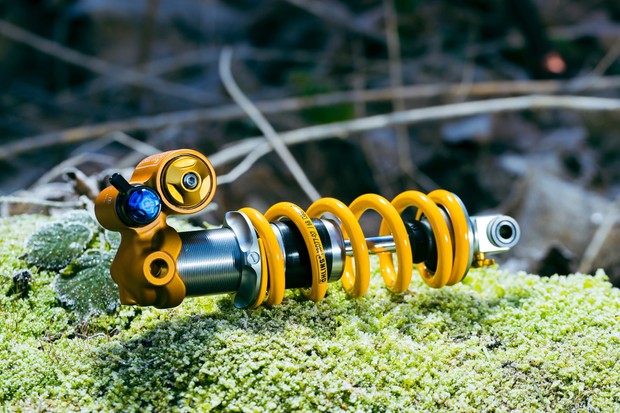
The spring rate of an air shock follows a progressive pattern, unlike a coil spring, wherein the rate at which it becomes harder to compress is not directly related to the amount of compression.
Is Your Bike Compatible with a Coil or Air Shock?
It is important to consider that not all frame designs can accommodate coil shocks. Russ Burton / Our MediaThe compatibility of your bike with either a coil or air shock depends on its frame design and suspension kinematics.
Due to their adjustability, most mountain bikes tend to prefer air shocks as their standard suspension, with the design of the suspension system being based on them.
However, an increasing number of bikes are now compatible with both air and coil shocks, such as Whyte’s G-180 and Santa Cruz’s Nomad, making it a more common practice.
If you’re uncertain, it’s best to consult your bike or shock brand, or even a suspension tuner, for more guidance.
Advantages of Coil Shocks
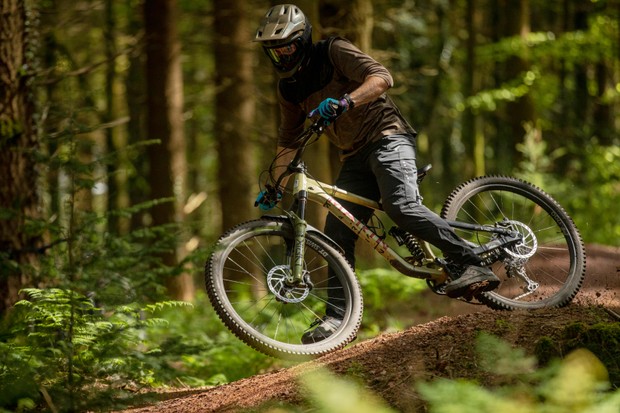
If you’re seeking a more grounded experience, coil shocks may be the solution for you. Mick Kirkman / RockShox
Coil-sprung shocks offer improved sensitivity to small bumps, better support throughout the midstroke, and often deliver superior damper performance.
One reason for this is the reduced stiction or static friction. Compared to an air-sprung shock, coil shocks have fewer seals, allowing for lower breakaway force to activate the travel over smaller bumps.
Consequently, these shocks will enhance traction and keep your rear tire firmly planted on the trail, even in loose conditions.
Furthermore, coil shocks generally require less maintenance due to their reduced number of seals.
Having fewer seals translates to less servicing required. Alex EvansMandell explains: “While both shocks necessitate damper servicing, coil shocks do not need the air can service that we recommend after 50 hours of ride time.
Although the architecture of both shocks is different, they possess an equal level of intricacy when it comes to upkeep.
Furthermore, coil-sprung shocks exhibit heightened resistance to the accumulation of heat, thus ensuring greater consistency during long descents.
Drawbacks of Coil Shocks
Despite their advantages, it is uncommon to witness an XC rider utilizing a coil shock due to its weight. THE MERIDA EX ENDURO / Jon WoodhouseAdditionally, one challenge lies in finding the appropriate spring rate that suits your weight and riding style. This task necessitates physically replacing the coil springs, requiring the removal of the shock from the bicycle, followed by the detachment of the coil from the shock.
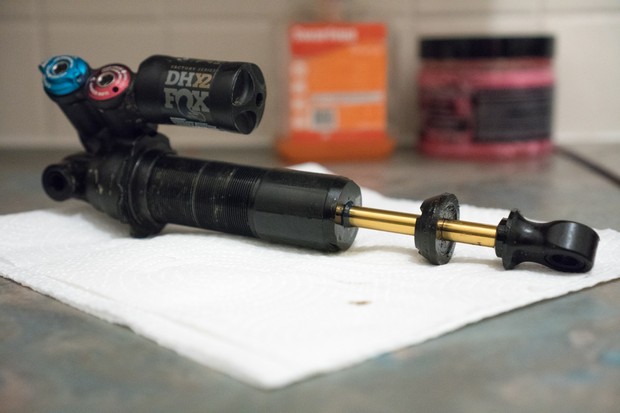
Coil spring rates are only available in predetermined increments, and if your specific requirements demand a spring weight that isn’t offered, you will encounter difficulties in attaining the correct setup for your shock.
Moreover, coil shocks may exhibit less resistance to bottoming out compared to air shocks. However, certain brands incorporate progressive springs and incremental rate adjustment to mitigate this issue. Additionally, the inclusion of substantial bottom-out bumpers can contribute to improvement in this aspect.
Chris argues that “If you are a rider who applies lighter pressure on the bike, gliding rather than forcefully pushing it along the trail, you may not require the bottom-out protection provided by an air shock. This makes the linear spring rate of a coil shock more appealing.”

Furthermore, it is important to note that coil shocks tend to be heavier and bulkier due to the presence of the coil spring. Additionally, compatibility can pose a challenge as they may not be suitable for all frames, both in terms of fitment and the frame’s suspension kinematics.
Advantages of Air Shocks
On the other hand, air shocks offer a livelier riding experience. Andy Lloyd / Our MediaDue to the absence of a metal coil, air-sprung shocks are generally much lighter, making them the preferred choice for weight-conscious riders.
The air spring pressure can be fine-tuned infinitely to accommodate different rider weights and preferences, using a shock pump.
Mandell emphasizes: “One of the primary reasons why air shocks are prevalent on many new bikes is their ability to be easily set up in the shop and sent off.”
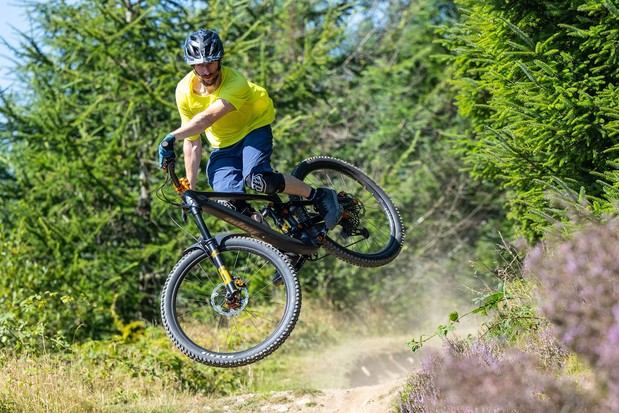
Furthermore, you can adjust the spring’s progressivity by adding or removing volume spacers, which alters its resistance to bottoming out.
In terms of the riding experience, air shocks generally provide superior resistance to bottoming out, and their springs can be customized to work harmoniously with compression damping to enhance mid-stroke support.
The drawbacks of air shocks
Air shocks necessitate more frequent servicing compared to coil shocks.
Steve Behr / Our Media
Air shocks aren’t as supple as coil shocks because additional seals are required to retain high-pressure air, resulting in increased friction. Moreover, due to these seals, air shocks require more regular maintenance.
The initial stiction upon initiating movement is a primary contributor to reduced sensitivity in air shocks when compared to coils. Nonetheless, as Mandell points out, “Once the shock starts moving, the stiction essentially disappears.”
The size and pressure of the air shock’s negative spring chamber also play a significant role in its suppleness. Generally, air shocks with larger negative springs inflated to higher pressures exhibit greater suppleness than those with smaller springs, although they still struggle to match the smoothness of a coil shock.
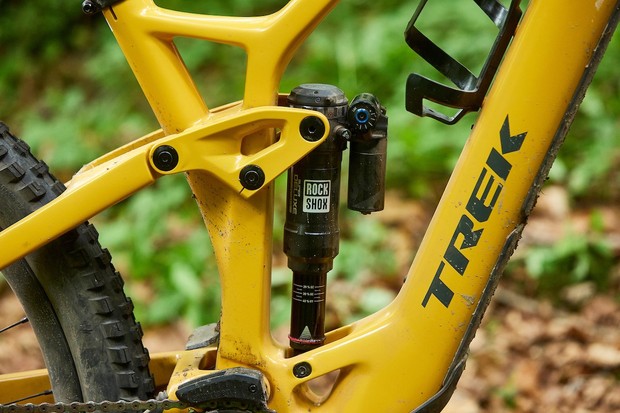
Air shocks are more susceptible to heat build-up since compressed air becomes hot, similar to a tire pump. This can lead to increased spring stiffness, decreased damping performance as the oil warms up, and an inconsistent riding feel during prolonged descents.
However, Mandell argues: “The change in oil viscosity is minimal when compared to the overall percentage of damping force provided by the shock.”
So, what’s the best option for you?
Ensuring that your current shock is properly set up should be the first step in determining whether a change is necessary.
Ian Linton / Our Media
As you might have already inferred, there is no universally superior choice for all circumstances. The decision comes down to the type of terrain you ride on, your location, personal preferences, and your individual riding style.
Mandell’s Take on Suspension Types
Mandell offers his perspective on suspension types. According to him, when traversing extremely steep terrain, a coil shock is the preferred choice. This is because the coil shock allows the bike to settle deeper into its travel, resulting in a slacker head angle. An increased head angle brings about a heightened sense of confidence, thereby enhancing performance.
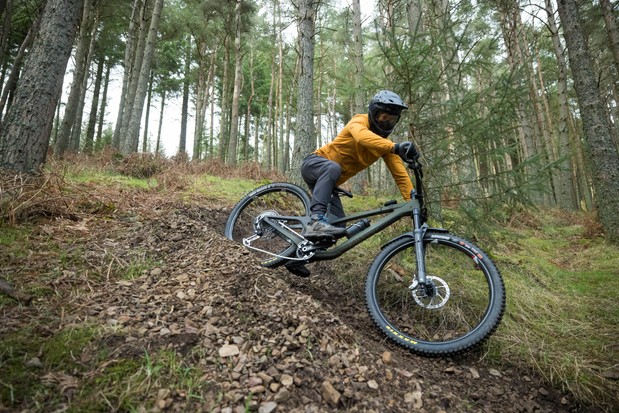
Additional Factors Affecting Suspension Performance
Apart from selecting the appropriate shock type, it is crucial to consider various other factors that impact suspension performance. These factors include the quality of the oil used, regular servicing history, ensuring the correct spring rate, and the meticulousness in which the suspension is set up.
- The Quality of Oil
- Servicing Frequency
- Choosing the Correct Spring Rate
- Optimal Suspension Setup
Remember, every aspect mentioned above plays a pivotal role in maximizing your bike’s suspension capabilities. To gain a comprehensive understanding of how to achieve optimal suspension setup, check out our informative video guides.
| Elements Influencing Suspension Performance | Summary |
|---|---|
| Shock Selection | The choice of shock type affects the bike’s handling on steep terrain. |
| Oil Quality | The quality of the oil impacts suspension performance. |
| Servicing History | Regular servicing is vital for maintaining optimal suspension functionality. |
| Spring Rate | Selecting the appropriate spring rate ensures proper suspension response. |
| Suspension Setup | The meticulousness in which the suspension is set up determines its efficiency. |








